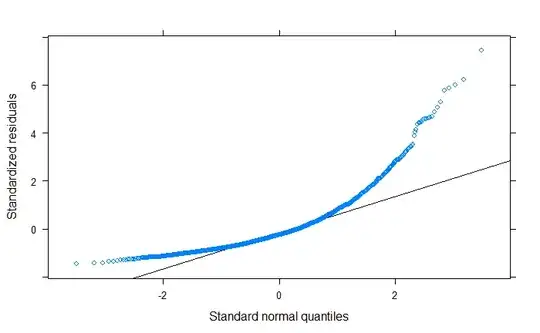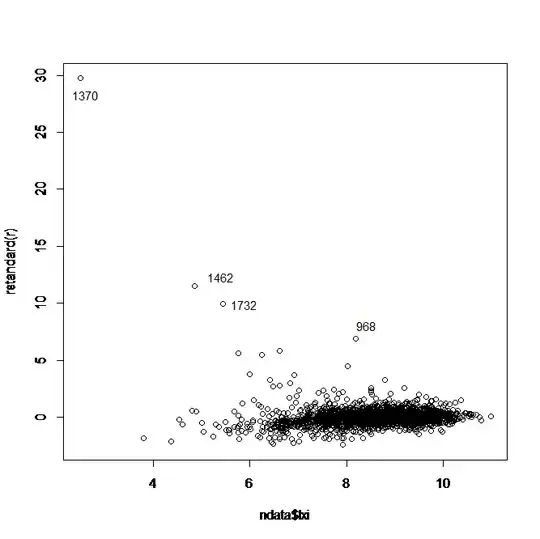I’m running a multilevel model in which the outcome variable is a Fisher Z-transformed correlation coefficient. The residuals look quite non-normal:
In case the details matter, I’ll mention that the model in question is model ‘1’ described here
Though I'm not sure how concerning this is in absolute terms, it's far more non-normal than I'd previously seen when previously doing classical or multilevel regression. However, typically I don't use outcome variables that have been transformed in this way.
I'm wondering the following:
Was the non-normality of the residuals an inevitable (or highly likely) consequence of my choice of outcome variable. If so, why?
What, if anything, should I do about this issue? I’m weighing the pros and cons of doing nothing as against applying a further transformation.
In terms of how concerned I should be about this issue, is there any reason I should be more/less concerned seeing this happen with a multilevel regression model than I would be if I was doing a classical regression model and saw the same level of non-normality of residuals? I’m aware that, as per this question, in linear models in general the normality of residuals is “barely important at all” for the purpose of estimating the regression line.
Edit: As per @nick-cox's comment, I've pasted a few histograms below indicating the distribution of the original correlations and of the Fisher-transformed correlations. The reason all the correlations are positive is that the correlations are measures of effect size. I've also shared the data here.


